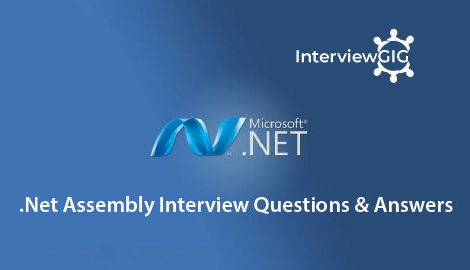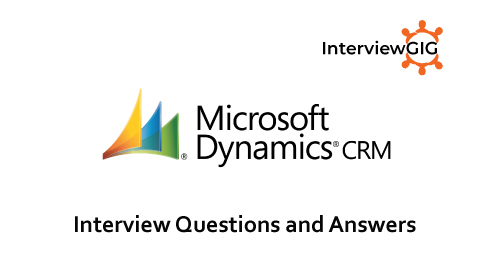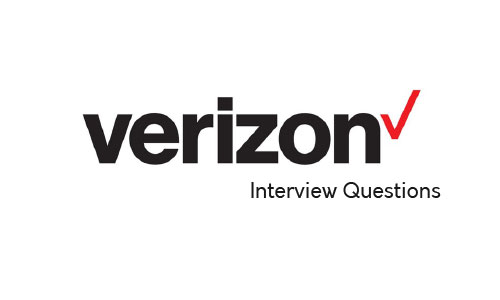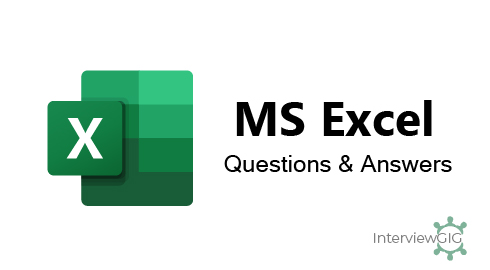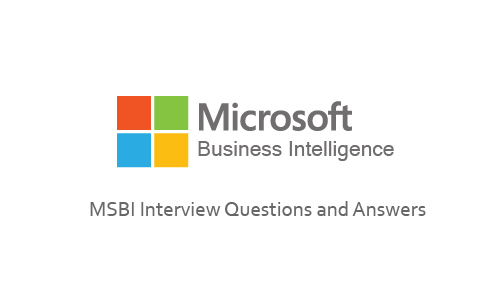What is MS Dynamics AX?
Microsoft Dynamics AX (Microsoft Business Solutions – Axapta) is a cutting edge, multi-language, multi-currency Enterprise Resource Planning (ERP) solution. Dynamics AX flexibly supports multi-site operations spanning different countries and regions, providing powerful intercompany processing automation as well as region specific statutory regulatory reporting to comply with local regulations and tax requirements.
Why Microsoft Dynamics AX?
Microsoft Dynamics AX is the world’s fastest selling business application and according to Gartner – the IT industry’s leading independent research organization is currently the best ERP product available for mid-market organizations. Offering extensive and robust functionality, Dynamics AX delivers low total cost of ownership (TCO) through its strong integration with other Microsoft products and technologies. AX helps improve the financial performance of your organizations, reduce costs, and increase revenue
What are the features of Microsoft Dynamics AX?
| General ledger |
Recruitment and selection |
| Accounts receivable and payable |
Development, training, and performance management |
| Bank management |
Employee self-service portal |
| Budgetary control |
Expense management |
| Shared service support |
Standard, impromptu, and analytical reports with Microsoft SQL Server Reporting Services |
| Compliance management |
Role tailored, predefined, multidimensional data cubes |
| Material and capacity planning |
Dashboard views of key performance indicators |
| Resource management |
Service orders and contracts |
| Job scheduling and sequencing |
Service calls and dispatching |
| Product configuration |
Repair management |
| Shop floor management |
Service subscription |
| Inventory management |
Project accounting and invoicing |
| Multisitewarehouse management |
Project cost control |
| Trade agreements |
Work breakdown structures |
| Order promising |
Interoperability with Microsoft Project |
| Distribution planning |
Sales force and marketing automation |
| Quality management |
Lead and opportunity management |
| Organizational and workforce management |
Sales management |
|
Microsoft Dynamics CRM Connector |
What are the Advantages of Dynamics AX?
Microsoft Dynamics AX Solutions are also well known for its custom-made applications together with powerful business intelligence modules.
- Multilayered architecture offers business agility to cater to rapidly changing business requirements
- Leverage of industry best practices and vertical-market processes through the business process library (BPL)
- Seamless Microsoft Office integration with Excel, Word, Outlook, and Dynamics CRM, often with one click
- An enterprise portal that promotes both internal and external collaboration, as companies can share information upstream and downstream to streamline production and delivery
- This Suite complimentary tools including the Management Reporter, dashboards, balanced scorecards, data warehousing and OLAP collectively deliver a powerful business intelligence solution
- Role-based configuration allows dashboard creation for specific user functions, such as Kanban scheduling visualization, workflows, data flows, and task lists, whether using the Windows Client or a web browser
- Good global ERP support, with multi-currency and multi-language capabilities
- An extremely strong global partner network and third party software marketplace
- Simple upgrade from Dynamics AX 4.0 and AX 2009 directly to AX 2012
- Executives can monitor performance at any level, improve product delivery success, and drive revenue growth.
- Finance and accounting departments gain enhanced visibility, improved financial controls, and increased forecasting accuracy.
- Project management can streamline processes and budgets, improve resource scheduling, and enable team collaboration.
- Sales and marketing departments gain deeper insight into clients and opportunities, increase project quoting accuracy, and have the ability to automate marketing campaigns.
- IT management is simplified by eliminating disparate IT systems and leveraging existing technology investments.
- A very strong and integrated CRM solution
What is Morphix in AX?
The integrated development environment (IDE) in Microsoft Dynamics AX is called MorphX. MorphX is used to modify forms, reports, tables, menus, etc. If we need to create or modify (customize) AX objects like forms and reports we need to use this MorphX IDE. MorphX IDE only works if you installed the developer license in your Microsoft Dynamics AX. MorphX is an easy tool to developer. The developer can create forms, menus, tables, manage labels and reports in easy manner by using this IDE.
What is IntelliMorph in AX?
IntelliMorph: IntelliMorph is a runtime environment in Microsoft Dynamics AX. It helps lot to developer. It works that how user interface is displayed to the user. I mean the appearance. The developer adding the fields in the forms but the IntelliMorph technology is displaying the fields in the form with correct appearance like width, height, etc… So, it reduces the developers work. The developer no need to worry about how the controls appears on the forms and reports.
What is X++ in AX?
X++ is the programming language in Microsoft Dynamics AX. X++ uses object-oriented programming principles, such as encapsulation, inheritance, classes, objects, methods, and properties. The X++ syntax will be familiar to C# developers, and incorporates SQL data manipulation statements.
What are the few X++ classes/Core classes related to Queries?
Query, QueryRun, QueryBuildRange, QueryBuildDataSource, QueryBuildLink
What is AOS in AX?
The Application Object Server (AOS) provides the infrastructure to execute the business logic of the Microsoft Dynamics AX application. The AOS handles the required connectivity, security, and database connection management. You can install the AOS on a single computer or on multiple computers and group these computers in a load-balanced cluster. The Microsoft Dynamics AX Application Object Server (AOS) is used for sharing application objects and information as an effective tool to increase application performance. In Microsoft Dynamics AX 2009, you can create a single cluster or multiple clusters of AOS servers.
Microsoft Dynamics AX requires Windows-integrated authentication for all servers in the system, which means that you must be running Active Directory. For security reasons, the AOS must be installed on a Windows server operating system.(Microsoft)
What is AOT in AX?
In Microsoft Dynamics AX, the Application Object Tree (AOT) contains all of the definitions of elements that are used to build Microsoft Dynamics AX, such as classes, tables, forms, and so on. To create a new element in the AOT, right-click the relevant node, and then click New. In addition, drag-and-drop operations are available for many elements.
All elements under the top-level nodes have:
A shortcut menu: To open the shortcut menu, right-click an element.
Properties: To see the properties and property values of an element, right-click the element and then click Properties. The Properties sheet is displayed.
What is Perspectives node?
In the Application Object Tree (AOT), under the Data Dictionary node, there is a Perspectives node. A perspective is a collection of tables and views that contain the measures and dimensions for a cube.
What is MS Dynamics AX AZURE?
Azure is an open and flexible cloud platform that enables you to quickly build, deploy, and manage applications across a global network of data centers that are managed by Microsoft. Azure enables cloud computing. Cloud computing is the delivery of computing capabilities as a service. Cloud computing makes it easy to access IT resources such as computers, networking, and storage
What is the difference between Auto Design and precision Design in AX?
Auto Design: An auto design is a report design that has a layout that is automatically generated based on the data for the report. You can use auto designs for most common reports. Reusability is available. This uses Report template and Section template. Header, Section Group and Footer is not available.
Generate Design or Precision design: You can create a precision design for a report that requires a very precise layout. It doesn’t use Section template and Report template. Reusability is not available.
What does the CRM landscape look like at the moment?
Dynamics professionals don’t operate in a vacuum, and neither will a prospective employer. While Dynamics CRM – or ERP solutions – are incredibly popular solutions, the competition is becoming increasingly strong. A couple of popular, although younger, ones are Zoho and HighRise.
What is an EDT and Base Enum?
EDT: To reuse its properties. The properties of many fields can change at one time by changing the properties on the EDT. Relations can be assigned to an edit are known as Dynamic relations.EDT relations are Normal and related field fixed.
BaseEnum: which is a list of literals. Enum values are represented internally as integers. You can declare up to 251 (0 to 250) literals in a single enum type. To reference an enum in X++, use the name of the enum, followed by the name of the literal, separated by two colons.
What are the Table groups?
Table groups provide a method for categorizing tables according to the type of data they contain. Determining group membership is not an exact science but more of a conceptual definition. When determining group membership for your own tables, follow the standards in the Microsoft Dynamics AX application. Table groups are:
- Parameter
- Group
- Main
- Transaction
- Worksheet Header
- Worksheet Line
- Miscellaneous
What are Report Models in AX?
The following properties are related to report models that are used to add information to a report.
- Analysis Selection
- Analysis Visibility
- Is Lookup
- Singular Label
- Typical Row Count
What is Query Report and RDP Report?
Query Report: We can create reports using AOT Query (static query). This approach is suggested when data is coming direct from tables.
RDP Report: RDP report involves business logic according to the requirement this logic may be calculations or getting values from different tables based on conditions.
What is difference between perspectives and table collection?
Perspectives can organize information for a report model in the Application Object Tree (AOT).
- A perspective is a collection of tables. You use a report model to create reports.
- Table collection is a collection of table, which sharing across all the virtual companies.
What is the function of super ()?
This method calls the system methods to execute. It is used to instantiating the variables at the parent class. Used for code redundancy.
Which classes are used for data import export?
SysDataImport and SysDataExport
What is an index?
An index is a table-specific database structure that speeds the retrieval of rows from the table. Indexes are used to improve the performance of data retrieval and sometimes to ensure the existence of unique records.
What is Virtual Company?
Dynamics Ax stores data as per company in tables. But there might be occasions when you want to share data across companies, like country, state, zip codes data. This sharing of data is achieved by creating a virtual company and storing data in this virtual company. Normal companies are then configured to read/write data from this virtual company. The only purpose of virtual company is to share data across companies, you cannot log into this virtual company.
What is difference between new and construct method?
New (): used to create a memory to the object.
Construct (): You should create a static construct method for each class. The method should return an instance of the class.
What is Report Catalog for Microsoft Dynamics AX 2012?
The Report Catalog for Microsoft Dynamics AX 2012 describes the Microsoft SQL Server Reporting Services reports that are provided with Microsoft Dynamics AX 2012.The reports in this catalog are organized according to the module they are included in.
What is Security Key?
Security key: Security keys allow administrators to set security on a user group level. Minimizing access on a user group level helps to reduce the attack surface against potential attacks.
The main reasons to apply user-level security are to:
- Allow users to do only their designated tasks.
- Protect sensitive data in the database.
- Prevent users from inadvertently breaking an application by changing code or objects on which the application depends.
You need to apply a security key to:
- Tables
- Views
- Menus
- Menu items
- Form controls
- Report controls
Explain Types of MAP in dynamics AX?
There are two types of Maps available in dynamics AX
X++ Maps: it can be used as a temp data store for the given scope of a process. This takes us less overhead and is much quicker than a Tempt able. For Further reading
AOT Maps: A map can unify the access to similar columns and methods that are present in multiple tables. You associate a map field with a field in one or more tables. This enables you to use the same field name to access fields with different names in different tables. Methods on maps enable you to create or modify methods that act on the table fields that the map references.
What are the different types of menu items available?
- Display: for Form
- Output: for Report
- Action: for classes.
How many types of relations are available in Axapta, Explain each of them?
Normal Relation: enforce referential integrity such as foreign keys. For displaying lookup on the child table.
Field fixed: works as a trigger to verify that a relation is active, if an enum field in the table has a specific value then the relation is active. It works on conditional relations and works on enum type of data.Ex: Dimension table
Related field fixed: works as a filter on the related table.it only shows records that match the specified value for an enum field on the related table.
What is the differences between Container and Tempory Tables and Collection Classes?
Container: Use a container to pass values between the client and server in a single method call and when data/values are few records as values are stored and retrieved in the container sequentially.
As I’ve said earlier containers have performance implications if not used appropriately and this is especially true when there is huge data manipulation in the container because for every X++ container statement new memory is allocated for creating new container object causing the performance bottlenecks.
Tempory Tables: Use Temporary Tables when you handle huge amount of data for faster retrival because indexes can be setup on the table and also table passing is “Pass by reference” which will give performance boost as only pointer to the object is passed unlike in container new container copy is passed causing memory issues.
Collection Classes: Use Collection Classes [List, Set, Map, struct] to store and retrieve not only simple types such as strings and integers, but also more complex types such as records and objects. Dynamics AX collection classes have been designed for storing objects. The classes are implemented in C++ to achieve the maximum performance (they are system classes – MSDN). Check out here for good overview and examples of Collection Classes Framework.
What are the features of Containers?
Features of Containers:
- It is a “composite data type”
- It is 1 based not 0 based.
- It is not a class therefore classes/objects cannot be passed/put into a container.
- It contains an ordered sequence of values (primitive datatypes – int, str, real, date, boolean, enum etc.) or other containers or/and some composite data types.
- It is a “PASS BY VALUE” type not “pass by reference” type which means while passing container the copy of container with values is passed not the reference.
- It is IMMUTABLE which means a container is never modified with any functions rather all X++ statements acting on a container are internally building a new container.
- It can be stored in the database as a database coloumn created through AOT especially used to store images/files as a blob.
What are Key features of the Production module in Microsoft Dynamics AX ERP solution?
Key features of the Production module in Microsoft Dynamics AX ERP solution include the following:
- Fully integrates with the entire Microsoft Dynamics AX solution.
- Generates production of specific Bills of Material (BOMs) for each configured item.
- Models complex products.
- Helps to organize relevant tasks, tools, and information in a personalized format with specialized Role Centers.
- Delivers real-time, integrated Work in Progress (WIP) views of actual costs.
- Offers immediate item configuration based on customer input.
- Provides configuration details on printed order documents with Axapta Document Handling feature.
- Generates item numbers based on model variables.
- Allows flexible price calculations based on percentages, fixed amounts, or specific variables.
- Offers the ability to select a preferred language in the user-dialogue setup window.
- Allows data to be reused from previous configurations.
- Helps to minimize delays with drag-and-drop rescheduling options.
- Delivers tight control over every aspect of the production floor with Bottleneck Scheduling.
- Offers maximum flexibility with finite or infinite capacity scheduling
